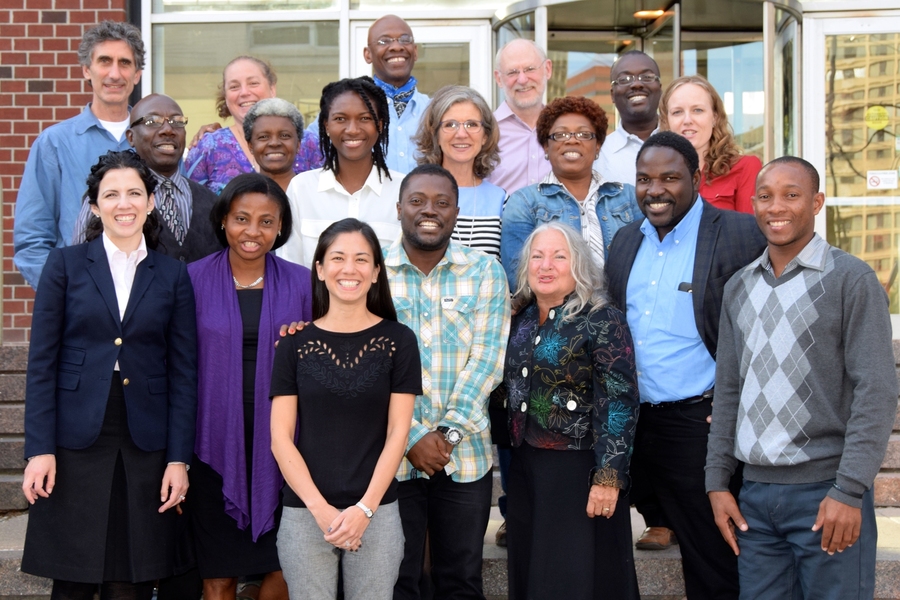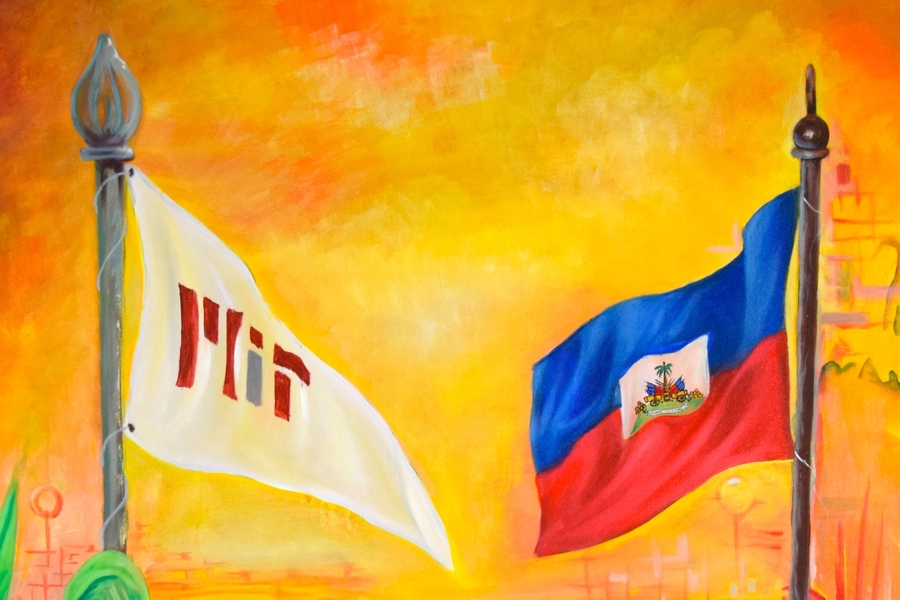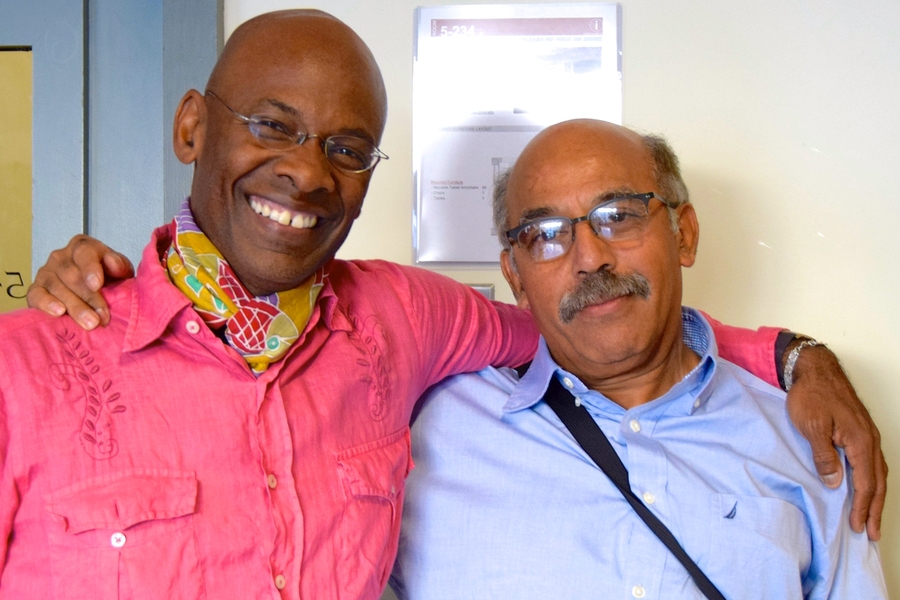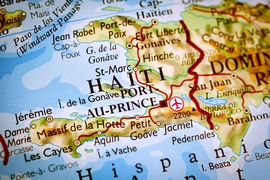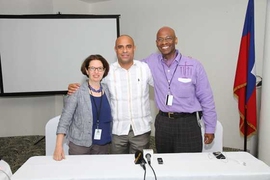Six veteran educators from Haiti — two biologists, two physicists, and two mathematicians — were on campus recently to work closely with MIT faculty to develop and hone Kreyòl-based, technology-enhanced pedagogical tools for STEM education. This interdisciplinary and intercultural exchange was the most recent effort of the MIT-Haiti initiative, founded in 2010 by MIT professor of linguistics Michel DeGraff.
The MIT-Haiti initiative promotes the use of Kreyòl-based digital tools to improve science, technology, engineering, and mathematics (STEM) education in Haiti. Historically, Haitian children have been educated exclusively in French, a language in which most of the population are not fluent.
“The basic premise of our initiative,” DeGraff explains, “is that using Kreyòl for Haitian education is an essential ingredient to improving quality and access for education for all.”
Educators detail the value of Kreyòl in Haitian classrooms
On Thursday, Sept. 24, DeGraff, along with Haynes Miller, professor of mathematics, and Associate Dean Vijay Kumar, co-founder of the MIT-Haiti Initiative, convened a panel discussion with the six visiting educators to provide the MIT community with some insight into the education challenges in Haiti, the MIT-Haiti Initiative, and their reflections on the intensive fellowship here at the Institute.
“In Haiti's classrooms,” said Guerda Jean-Guillame, professor at the Training Center for Fundamental Schools, “most children do not like to ask or answer questions. They are constantly struggling to translate from Kreyòl into French or from French into Kreyòl.”
The use of French creates problems for teachers as well. Jimmy Fedna, professor at Quisqueya University and the École Normale Supérieure (Teachers' College), remarked on the difficulty. “I teach in Kreyòl because that's the language in which I am most comfortable,” he explained. “I like to make jokes when I teach. That humor is essential for good teaching — to wake the students up, to keep them alert, to relax them, and so on. When I teach in Kreyòl, I’m a much better teacher.”
Several of the educators noted that the use of French in Haiti's classrooms has been a national education policy. School exams as well as national assessment tests are mostly conducted in French, rather than Kreyòl, and STEM course materials for high schools and universities have also been available exclusively in French — until recently when the work of pro-Kreyòl educators both in Haiti and in the Haitian diaspora, including work by DeGraff and the MIT-Haiti endeavor, started showing the key benefits of a Kreyòl-based education at all levels of the education system.
Developing digital resources in Kreyòl
The MIT-Haiti Initiative was catalyzed by DeGraff’s ground-breaking linguistics research into Kreyòl. Over the course of two decades, DeGraff has shown that Creole languages are as capable of conveying complicated intellectual concepts as any other Indo-European tongue.
Through the Initiative, DeGraff has organized Kreyòl education programs around the country, with the support of a National Science Foundation Grant, and has advocated for new national standards. His work, alongside that of like-minded pro-Kreyòl scholars, has paid dividends: Earlier this year, Haiti adopted a new educational policy that will allow students to be educated in Kreyòl rather than French.
“This Initiative meets a crucial need in Haiti,” said Jean Genis Dorvilien, professor at College Catts Pressoir and Lycée Cité Soleil. “It is introducing modern techniques for interactive pedagogy while helping to develop digital resources in Kreyòl.”
A project with global significance and impact
As part of the MIT-Haiti Initiative, digital tools created at MIT and elsewhere — including STAR, Mathlets, and PhET — have been translated into Kreyòl and provide proof of concept of Kreyòl as a necessary ingredient for active learning in Haiti.
“This project will have a profound impact on the way people think about teaching STEM in mother tongues,” said Kumar, the senior strategic advisor for digital learning, “and serve as a very important model for similar initiatives around the globe.”
Across large swaths of Africa and the Americas, indigenous languages continue to face systematic marginalization, says DeGraff. The MIT-Haiti Initiative offers a guide for these populations to empower their communities by making their voices heard.
